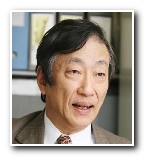Historical Overview of Health Sector Reform of Japan and its Future Perspective
Abstract
Rapidly aging and how to deal with problems relating aging are major challenges common in East and South-east Asian countries. Reform of the total society is needed to deal with aging related problems and make the society and social systems sustainable. Although Japan is highly industrialized and Japanese makers are highly competitive in global markets, there are several areas which are protected by barriers such as authorization by governments and governmental financial aid. Education, agriculture and healthcare are highly protected areas, and regarded as main battle fields. In Japan, health sector reform led by P.M. Koizumi (2001-2006) was characterized by neoliberalism; tried to strengthen the power of the cabinet office (secretariat of the P.M.) compared to each assigned ministry, implement internal market through deregulation. The reform was succeeded by P.M. Abe whose government lasted less than 1 year (2006-2007) because of his health problem. Reform by Koizumi and Abe specified several important areas for reform with recommendations, and suggested that 1) change of decision making process among governments would be effective, 2) political stability was essential since the reform takes relatively long time (at least several years). After experiencing serious retreat by the government of Democratic Party of Japan (2009-2012), Abe came back to the government again in 2012, and has been leading the reform. Japan witnessed 1) increase of the elderly and worsened fiscal situation, 2) the role of healthcare as a safety net in case of disaster such as earthquake and tsunami in 2011 and 3) introduction of expensive new medical technologies. They accelerate the reform with some modification. Areas for deregulation are clearly distinguished from areas under public control, where the power of authority was strengthened. Regional health plan and integrated healthcare system are characterized by strict control of number of hospital beds by function based upon the expected number of patients in future. OPDIVO (Nivolumab) is highly effective in about 20% of patients with lung cancer or malignant melanoma. The average annual cost per patient is about 35,000,000 JPN, and is clearly unacceptable. It changed the revising process of national tariff for medications from every two years to every year paying attention to real sales compared to expected sales, and encouraged precision medicine. As an infrastructure, genome bank of cancer patients will be built to facilitate genome-base diagnosis as for responsiveness to expensive anti-cancer medications resulting in cost-effective personalized medicine. My presentation will address Japan’s experience from 2011 and try to extract lessens learned.
Programme
-
Plenary Session I
Moderators:
Dr SH Liu, President, Hong Kong College of Health Service Executives &
Dr Ben Fong, Senior Lecturer, PolyU SPEED - Plenary Session I (a)
- Plenary Session I (b) (i)
- Plenary Session I (b) (ii)
- Plenary Session I (c)
-
Plenary Session II
Moderators:
Prof. Maurice Yap, Dean, Faculty of Health and Social Sciences, PolyU &
Prof. Warren Chiu, Associate Dean, CPCE, PolyU - Plenary Session II (a)
- Plenary Session II (b)
- Plenary Session II (c)
- Parallel Sessions





